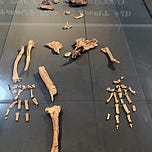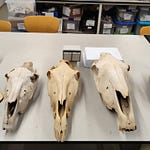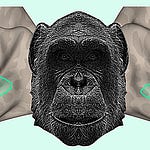Revisiting a Controversial Ancestor
Few fossils have divided paleoanthropology quite like Ardipithecus ramidus. Discovered in Ethiopia in the 1990s, “Ardi,” as she came to be known, offered a rare, nearly complete glimpse of a species that lived 4.4 million years ago — roughly a million years before Australopithecus afarensis, the species of “Lucy.”
From the start, Ardi seemed to challenge expectations. She could walk upright on two legs, yet she also bore the grasping hands and divergent big toe of a climber. To some researchers, this combination suggested that Ardipithecus represented a generalized ancestor, distinct from modern apes and from later human species alike. The implication was profound: perhaps the common ancestor of humans and chimpanzees looked nothing like either.
A new study, however, urges a different interpretation. Writing in Communications Biology,1 Thomas Cody Prang of Washington University in St. Louis and his colleagues present a detailed analysis of Ardi’s ankle — specifically, the talus, the keystone bone linking leg and foot. Their findings suggest that Ardi’s locomotion was not so generalized after all. Instead, she appears to have climbed in ways strikingly reminiscent of modern African apes.
“Ardi’s ankle anatomy bridges a crucial gap,” says Dr. Helena Ruiz, an evolutionary anatomist at University College London. “It suggests that the earliest hominins were not experimenting with novel forms of movement so much as refining ancestral ones already present in our ape relatives.”
Listen to this episode with a 7-day free trial
Subscribe to Anthropology.net to listen to this post and get 7 days of free access to the full post archives.










